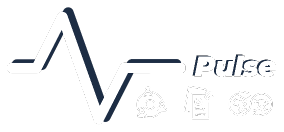The value of data
12 September 2017
Dr Lisk, UK Health Partnership Coordinator, describes data gathering for project M&E
from Epilepsy Association of Sierra Leone clinics, health centres, and hospitals.
EASL (Epilepsy Association of Sierra Leone) has always tried to collect data since its inception. Initial data collection was basic, mainly concentrating on the number of patients seen, ages, and gender, but, since the THET project, more consistent and sophisticated data are now collected. The National Coordinator has the primary responsibility to ensure that quality and reliable data are collected and kept. In this case study, Dr Lisk gives advice on the process.
Presently, the following staff members are directly involved in the collection, recording and reporting of data collected in EASL implemented projects. These are: the 2 Community Health Officers (CHOs); 1 Gender Officer; and the 13 Epilepsy Support Workers (ESW) who are basically community volunteers. All of these staff members and volunteers are required to report all data collected in the field at the end of each month.
The data collected monthly relate to basic patient characteristics, patient clinic attendance, anti-epileptic medication distribution, patient anti-epileptic medication intake, adherence to patient treatment plans and data on effects of epilepsy on women.
The main body of clinical data is collected at the regular monthly clinics held in 25 locations across the country as well as in weekly clinics in hospital settings. During the monthly clinics, the EASL Community Health Officers distribute anti-epileptic medication to the patients.
At this time also, the ESWs and the Gender Officer are able to provide education and support services for the patients who come for their monthly supply of anti-epileptic medication. Data is also kept by ESWs to document home visits, community visits, school visits, and ‘Barray’ (traditional gathering) meetings.
The partnership uses a data form designed specially for its work – download an example here. Since most of the areas of operation do not have computers or internet access, these forms have to be transferred manually to Freetown for collation and analysis. On occasions, data may be dictated over the telephone which can lead to errors.
The EASL project officer collects all the data from the field brought in by the staff members. She then processes them using a spread sheet before forwarding to the National Coordinator for further action. These figures are then presented to the Project Steering Committee at its 3-monthly meetings.
The value of rigorous data collection
Data collection has been useful to track patients’ attendance at the regular monthly clinics, which would identify those to be visited or contacted by the ESW. Also, we can now accurately monitor clinic growth, for example, the number of consultations in the 22 EASL centres within the 13 districts nationwide increased from 1,128 in 2012 to 14,778 in 2014.
This increase is likely due to the effectiveness of the ESWs’ awareness-raising work, and tracking defaulting patients. Also, the training of over 500 nurses at the Peripheral Health Units (PHUs) has increased patients’ referral to clinics.
With the monthly data analysis we know which clinics are not growing and so we can revert to the ESW in that district to review his/her performance and monitor their activities more closely. Through the ‘monthly drug distribution form’, we can monitor the HCW receiving the drugs for each clinic, the amount they were receiving, and the expected returns they should make before they are given another batch of drugs for the next clinic.
Our approach to data collection has remained basically the same; however, in 2013 we made additions to some of the data forms used by EASL staff. For example, the Monthly Clinical Registration List needed to capture information on how patients heard about the services offered by EASL which the old form was missing. This helps us focus our attention on the more effective sensitisation methods. Also, the Monthly Clinic attendance sheet was not capturing the number of patients that were referred from the health centres.
The need for this information arose from the opening of the PHU health centres following the training of over 500 health workers attached to these units who now refer patients from their PHUs to the EASL clinics.
Max Bangura, coordinator of EASL and in overall charge of data management remarked, “since we started collecting comprehensive data at the start of the THET project we have been able to plan and execute the activities of the association much better. I am indeed privileged to be involved in this project.”

